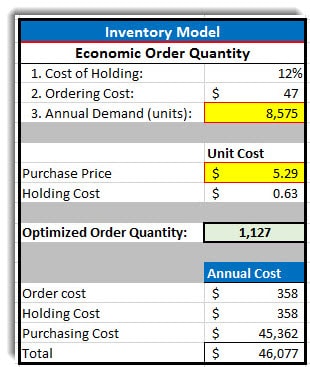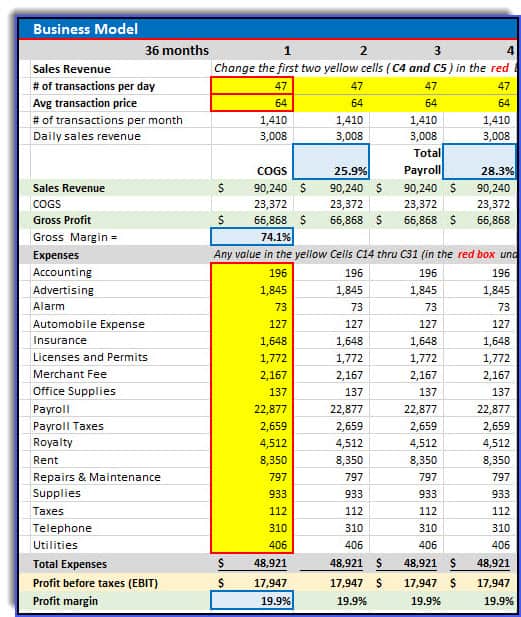Step #3: Slash Wasted Spending and Boost Sales
Now that we know precisely how much each source of business is actually costing you, it’s time to put every […]
Read More »Become a successful marketing consultant: Learn more


In today’s era of data-driven marketing, wading through piles of information and knowing what to focus on is often half the battle.
This is why decision modeling is important and can be an excellent planning tool for you.
Decision modeling is important in business to help you make better choices when faced with uncertain conditions. A decision model is a system that predicts the outcomes of decisions when faced with trade-offs, offering predictions if a certain action is taken.
The general purpose of a well-crafted decision model focuses on at least three critical core (1. objectives, 2. constraints, and 3. variables) issues, which we will review in this article.
Let's now review why decision modeling is so important, provide some helpful examples, and then learn how to transform data into a valuable tool known as a decision model.
A decision model is a system that predicts the outcomes of decisions when faced with trade-offs.
For example, the National Institute of Health (NIH) uses models to solve problems and they report,
“A decision model provides a way to visualize the sequences of events that can occur following alternative decisions.”
Decision models are used in business, often in Excel or Google Sheets, to make better choices when faced with uncertain conditions.
For two very good articles that can give you examples of two simple, but very common decision models used in business, visit these two helpful resources:
Why Is Budgeting Important to a Business? (+free template)
Food manufacturing financial ratios (Hormel vs Pepsi vs Nestle)
The true purpose of a decision model is to offer predictions if a certain action is taken.
The relationships between these three components make up a decision model:
These 3 components of the decision model and the forecasted results are mapped in order to understand or control problems.
Decision models are used in business to make better choices when faced with uncertain conditions. Decision models are frequently used to solve a variety of problems, such as:
Many organizations create beautiful pro forma reports with analytical expectations, supported with colored rows and columns, lines, and bolded fonts showing a possible outcome.
Unfortunately, more often than not, these outcomes are linear in nature and the outcomes are rarely achieved. Yes, the reports look very pretty. But most of the time they don’t reflect the realities of an unknown business climate. They usually only reflect a desired outcome.
But the goal of a decision model is often to examine the problem to be solved and evaluate unexpected factors such as randomness in the market, sales fluctuations, and a wide array of probabilities and variables in the models.
This can more accurately reflect the unknowns of the market. Decision models can also integrate the option to optimize decisions -- making the options statistically relevant -- as a result of running hundreds of thousands and sometimes millions of calculations using a simple tool called Solver, available as both Excel Solver and Google Sheets Solver as add-ons.
Additionally, you can discover your absolute best-case scenario given virtually endless roadblocks (called constraints) so that your team can see what the optimal situation actually looks like. And you can tell what the probability of the optimal solution actually is under real-world scenarios.
Insights like these can be very helpful in business planning and will help you make better decisions.
For example, we were recently asked to optimize the profit of a restaurant business model, so that their main location can have benchmarks for improvement.
In order to be competitive, this business model needed to help the manager achieve a net profit margin of 18% and relate it to the project investment payback period.
Optimizing the net profit of this restaurant became the goal of the model.
This company needed to know what decisions to make in order to keep control over costs (variable) to maintain an industry standard for gross profits. The model also needed to keep control on fixed costs in order to maintain a net income goal.
Before we developed these systems, all these moving parts were very difficult to manage. Finding the optimal solution – reflecting the real business environment -- was near impossible.
Once we built the foundation of the model, based on real-world historical data, we integrated the sales revenue information in order to optimize the model.
These became the ‘decision variables’.
This model also integrated break-even amounts and investment payback periods, as well as other key performance indicators.
Here is an example of what this model can look like:

For a very helpful article on how the difference between gross income and net income, and how it relates to getting capital for your business, go here:
Gross income vs. net income for bank business loans (The difference)
How a large flooring manufacturer used a decision model to optimize their inventory management
Using statistics, algebraic formulas, and a variety of tools, we ran literally thousands of calculations to find the most optimal decision(s) to help this manufacturer save money on inventory.
How to Be a Better Inventory Manager
-- So your resources make the highest return possible!
We were asked by this manufacturer to help them optimize their inventory investment. Their task was to locate the ideal amount of inventory to buy so they had ample product to serve their customers, but not so much inventory that it was wasting valuable resources that could be used in other places to earn a better return.
The optimal amount of inventory to purchase is called the ‘economic order quantity’ (EOQ).
EOQ is built on three main factors:
We built the model to create the optimal amount that the company should order at one time, the EOQ. After updating the annual unit demand (top yellow cell) and the purchase price per unit (lower yellow cell), and tied the values to an algebraic formula, we ran thousands of calculations to find the optimal value.
Here is an example of the type of model:

The decision to be made was calculated as the optimal value and tells the company to order 1,127 units.
Again, this optimized number is based on the purchase price of the product, the amount ordered by customers, the cost of holding it in the warehouse, and the cost to order.
With the EOQ, this construction manufacturer now knows what their optimal inventory purchase is – leading to a better purchase decision and better allocation of valuable resources.
Resources:
If you have excellent Excel or Google Sheets skills, you can learn how to turn this into an income as a marketing consultant. Go here to learn how with our Nomad Marketing Starter Guide.
References:
Source: Kuntz, Karen. "Overview of Decision Models Used in Research." Decision and Simulation Modeling in Systematic Reviews [Internet]. U.S. National Library of Medicine, n.d. Web. 01 Feb. 2017.